Combat ships. Cruisers. Possibly the best, but very expensive
Very often in my stories I say that “the ship is not without flaws,” “it could have been better,” and so on. A sort of letting go of grumpy bubbles from under the water. In fact, of course, I adore these contradictory ships very dearly. But cruisers are a wonderful class, and most importantly - beautiful and independent. Not like trough-carriers and other floating hulks that require protection and defense.
Whoever has been looking at this cycle for a long time (and at least 52 articles have already been published), he probably already concluded that there are ships that I treat with more respect than others. These are definitely "Hippers" and "Mogami". Moreover, "Mogami" in its light hypostasis was even more interesting than in the heavy one.
And now there are still others in the company. Two of the finest British light cruisers, two jewels of the royal shipbuilding industry. According to their characteristics, they are definitely the top world-class cruisers, and there was probably only one drawback - a huge price. Comparable to the cost of building a heavy cruiser. But first things first, as always.
And - we meet, "Edinburgh" and "Belfast".
Scotsman and Irishman. Yes, only two ships were built. Their fate turned out to be different, but we can only say for sure that they were just beautiful ships. "Edinburgh" took part in the sinking of "Bismarck", "Belfast" - a participant in the battle in which the "Scharnhorst" was sunk. But about the track record in due time, let's go in order.
And the order was as follows: after getting their hands on the development and construction of the series of cruisers "Linder", "Arethusa", "Sydney" and "Southampton", British shipbuilders came to the crown - the series "Town", ships not without flaws, but very, very good ...
In principle, the "Towns" came very close to the heavy cruisers of the "County" in terms of the power of weapons and power plant, and even surpassed them in terms of armor.
The arms race was already in full swing in the world at that time, and the main shake-up was made by the Japanese, who created the "Mogami", which at that time consisted of 15 155-mm guns and had an armored belt 102 mm thick and armored cellars 140 mm thick.
The Americans responded with "Brooklyn", which had even thicker armor (belt from 127 mm to 82, turret forehead 165 mm, barbets 152 mm, and so on) and armament of 15 152-mm guns.
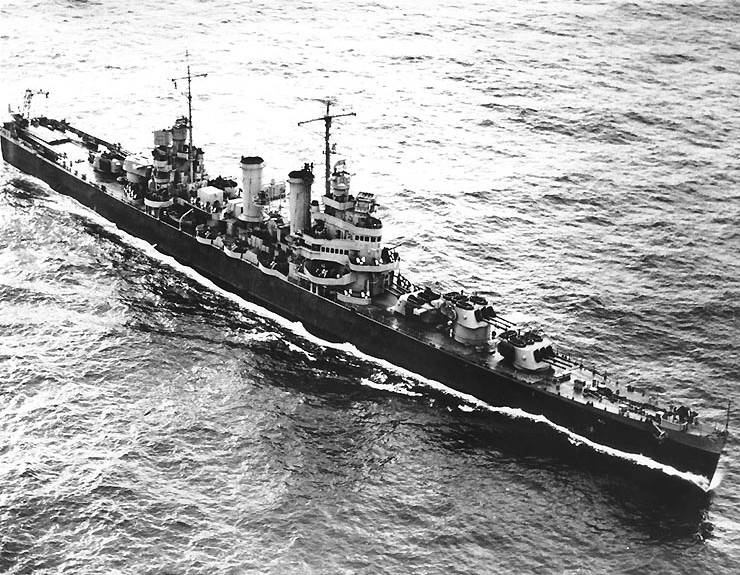
In general, given the higher rate of fire of 155-mm and 152-mm guns in comparison with 203-mm, the weight of the salvo of light cruisers approached the heavy ones.
In general, such an alignment of forces did not suit the British at all, and therefore it was decided to convert the last two cruisers of the Town series into light ones so that they could compete with the Mogs and Brooklyns. It is clear that with "Brooklyn" on paper, but the Japanese could easily become opponents.
But in order for the new ships to be comparable to the American and Japanese, it was required to bring the number of guns to 15. But with this there were problems. Five towers, as on Japanese or American cruisers, could not be placed on British ships, there would be a problem with docking, since the British docks could not accept ships longer than 188 meters. And the five-turret cruiser performed by British shipbuilders did not turn out to be shorter than 195 meters. A little, some 7-8 meters, but this is enough to start problems.
There was a project to equip ships with four towers, 4 barrels in each, which ended up giving 16 guns. However, in this case, too, the cruisers "eroded" in width, which entailed an increase in length, armor, and required other elevators for ammunition. Well, the new towers did not fit into the allotted volumes of the ships in any way, they had to be raised to the level of the forecastle. On the one hand, this worsened stability, on the other hand, it gave some advantage when shooting, especially when there was roughness at sea.
But in the end, the four-gun towers were not built. More precisely, it was not possible to solve the problem of dispersing shells with a full salvo. Powder gases from closely spaced barrels (just over a meter) negatively affected the projectiles and greatly increased dispersion. It was necessary to increase the distance between the trunks, and this entailed an increase in the width of the body.
In the end, they still decided to return to the usual three-gun barrels. But the enlarged deck made it possible to lay in the project at once 6 paired installations of 102-mm universal guns instead of the usual 4 and increase the fuel reserve by more than 300 tons, which increased the cruising range.
The use of standard towers made it possible to spend the freed up weight on armor and other useful things. The conversion began in 1936 and took quite a long time. It was necessary to reduce the artillery cellars, re-arrange all control posts, transferring them under the armored belt and armored deck, and design the box-shaped protection of the cellars.
102-mm anti-aircraft guns were smashed along the entire length of the ship, the four-barreled 40-mm "pom-poms" were replaced with eight-barreled ones and moved to the second chimney.
Belfast was laid down at Belfast, Edinburgh at Wallsend in December 1936. The "godmother" of "Belfast" was the wife of Prime Minister Chamberlain. "Edinburgh" entered service first, July 6, 1939, "Belfast" - August 3 of the same year.
Structurally, these ships did not differ much from the "Towns". The main difference from the "Town" series consisted in a different arrangement of boiler rooms and engine rooms and equipment in front of them with ammunition storage for 102-mm guns. Plus, the location of the pipes was changed to reduce smoke pollution on the bridges. And the cruisers acquired very characteristic and recognizable silhouettes.
In general, the ships turned out to be adequate in terms of stability and seaworthiness, however, the raised main turret towers still affected the stability of the ships, especially when the fuel from the bottom tanks was consumed.
Therefore, it was recommended to fill the vacated reservoirs with seawater. But the pitching on these cruisers was surprisingly smoother.
Reservation
The cruisers had an armor belt 114 mm thick, which covered the hull between the 26th and 238th frames. The belt dropped 91 cm below the waterline and rose to the level of the main deck, and in the area of the power plant to the upper deck.
The armored deck had a thickness of 51 mm, in the area of the artillery cellars, the thickness increased to 76 mm.
The steering mechanisms were enclosed in an armored box 25 mm thick, and the same 51 mm armored deck covered it from above.
The towers were armored with sheets 102 mm thick in the frontal part and 51 mm on the sides and top. The barbets of the towers were also 51 mm thick.
Universal guns had shields 13 mm thick, superstructures were armored with sheets from 6,5 to 16 mm thick. Rangefinder posts and crossings had 13 mm thick armor.
In general, it turned out that the Edinburgh and Belfast had more significant booking than even the heavy cruisers of the County type.
Power point
The main power plant consisted of four Parsons turbo-gear units and four three-collector steam boilers of the Admiralty type. The layout of the installation is echelon. Each TZA consisted of two high and low pressure turbines, which worked on one gearbox.
With a design power of 82 hp the maximum speed was supposed to be 500 knots. On trials "Edinburgh" showed the capacity of the machines 32,5 81 hp. and reached a speed of 630 knots with a standard displacement of 32,73 10 tons. The cruising range was calculated to be 550 miles at a cruising speed of 12 knots with a fuel supply of 200 tons.
The standard test displacement was 10 tons. The cruising range is 550 miles at a 12-knot economic speed with a fuel supply of 200 tons of oil.
Crew
The peacetime crew consisted of 781 people. The flagship had a crew of 881 people, of whom 36 were officers and persons equated to them (such as a chaplain and a flagship doctor).
The living conditions were very good. Senior officers lived in single cabins, junior officers in double cabins. The sailors lived in cabins for 12-24 people and slept in hanging bunks.
The cruisers were equipped with everything necessary for long voyages: an infirmary, medical offices, a church, a bakery, a ship's shop, and showers.
weaponry
The main caliber of the cruisers consisted of 12 Mk-XXIII 152-mm guns in four three-gun turrets.
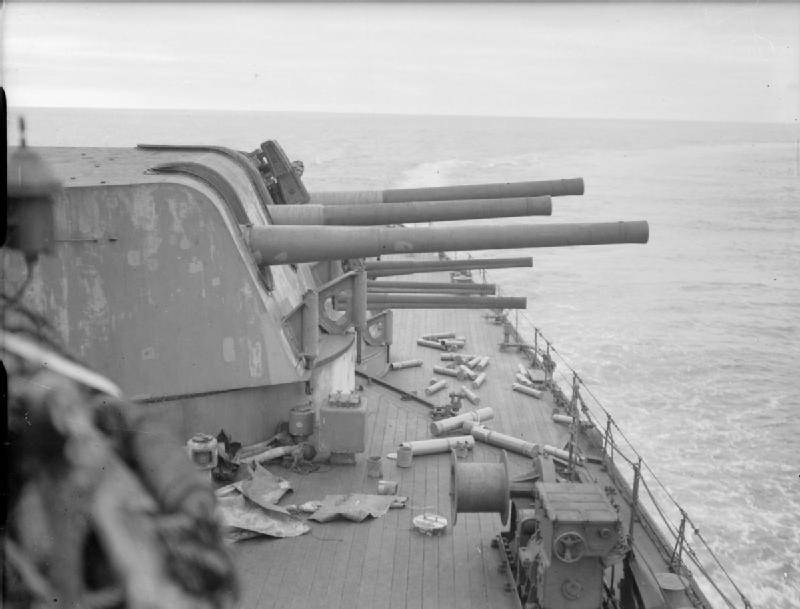
All three barrels in the towers were located in individual cradles, and the middle gun was carried back 760 mm so that the gases when fired from it did not affect the shells flying out of neighboring barrels during a volley so much.
The guns could be loaded at elevation angles from -5 to +12,5 degrees. The rate of fire of the guns was limited by the rate of supply of shells and charges from the cellars, namely 12 rounds per minute.
The main caliber fire was controlled by two directors located on the stern and bow superstructures. The information was sent to the central fire control post and processed on a mechanical computer.
The 152-mm Mk-XXIII cannon sent a projectile weighing up to 14,5 kg at a distance of up to 23 km with an initial speed of 841 m / s.
Flak
Long-range anti-aircraft artillery consisted of 12 102-mm guns in twin mounts.
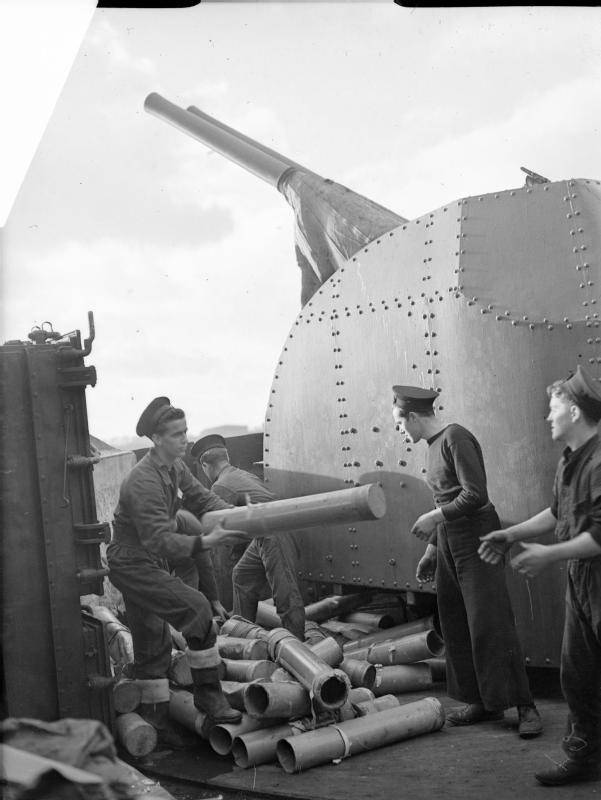
The guns sent shells weighing 15,88 kg at a range of up to 18 km and 11,89 km in height with an initial speed of 854 m / s.
The estimated rate of fire was 12 rounds per minute, but in real combat it was lower and was also limited by the rate of ammunition supply from the cellars.
At medium range, two eight-barreled Vickers Mk-IVA Pom-pom 40-mm assault rifles operated.
The initial velocity of the projectile is 732 m / s, the firing range is 6 220 m, the height reach is 3960 m. The effective rate of fire is 98 rounds per barrel.
The closest anti-aircraft armament consisted of two 12,7 mm Vickers four-barreled machine-gun mounts.
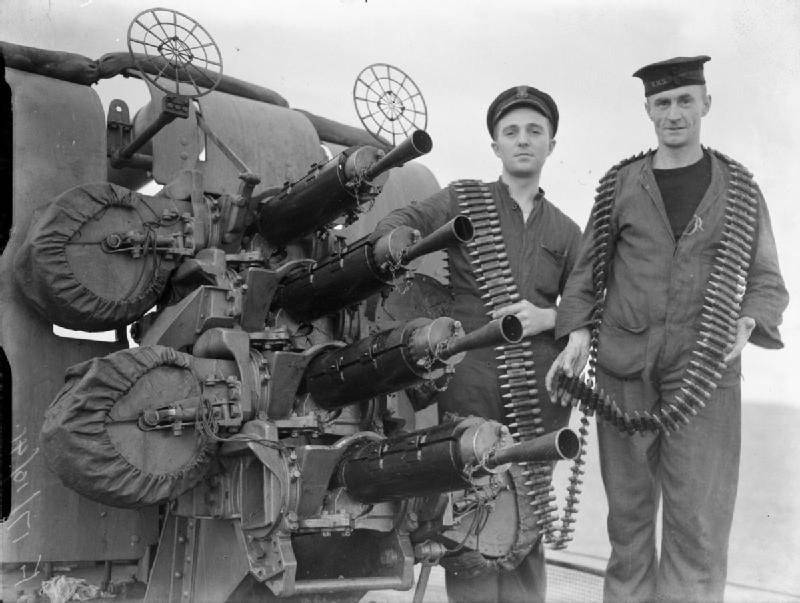
Mine torpedo armament
The ships were equipped with two three-tube torpedo tubes of 533-mm caliber.
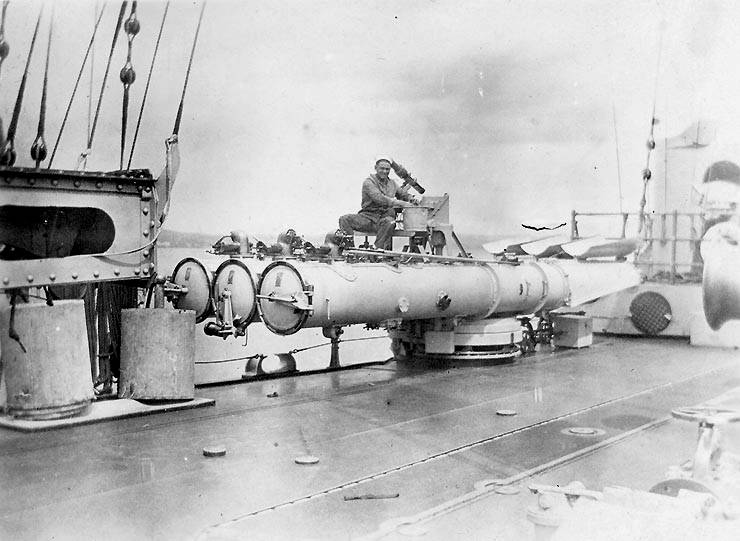
Ammunition consisted of 12 torpedoes, 6 spare torpedoes were stored in a special armored room between the torpedo tubes. Armor thickness 16 mm.
The cruisers' anti-submarine armament consisted of Mk-VII depth charges. Six bombs were on the rails on the upper deck in combat readiness, and 15 spare bombs were in a special room on the starboard side.
Aircraft Armament
The cruisers were equipped with a 1-meter long D-28H powder catapult with a Supermarine "Walrus" seaplane.
Two more of his brothers were housed in two hangars in the bow superstructure. Two 7-ton electric cranes located behind the catapult along the sides served to lift the aircraft aboard.
Upgrades
Naturally, they worked very actively on the ships, modernizing them to meet the requirements of the time. A special feature of the ships was the primary equipping of them with radars. Edinburgh received its first Type 279 radar in the first half of 1940.
In 1941, the cruiser's air defense was reinforced by installing 6 single-barreled 20-mm Oerlikon assault rifles.
In March 1942, the Type 279 radar was dismantled and three were installed instead: Type 284, 285 and 273. In this regard, "Edinburgh" became one of the best ships fleet... British radars, I must say, were only slightly worse than American ones, but they were superior to similar devices created in other countries.
"Belfast" was very radically modernized during the renovation, which was done after the cruiser was blown up by a mine in 1940. Anti-torpedo bullets were installed on the sides, which increased the width and draft of the cruiser (up to 20,22 m and 7 m, respectively) and reduced the speed to 30,5 knots. But it was clearly worth it.
In the course of this repair / modernization, the installations of 12,7-mm machine guns were removed and instead of them, 5 double-barreled and 4 single-barreled installations of 20-mm Oerlikon anti-aircraft machine guns were installed.
In addition to machine guns, five radar stations were installed, types 281, 282, 284, 285 and 273.
In June 1943, anti-aircraft armament was strengthened by 4 single-barreled Oerlikon submachine guns, a year later, in May 1944, instead of one twin installation, 6 single-barreled submachine guns appeared.
In 1944, during another repair, the Belfast lost two twin mounts of 102-mm guns and eight single-barreled Erlikons. Instead, they installed 4 quad and 4 single-barreled 40-mm Vickers Mk-IVA anti-aircraft guns. The catapult was dismantled and everything was removed aviation property, removed radars of types 273,281 and 284, and instead installed radars of types 281b, 274, 277, 293 and 268.
In August 1945, 2 more twin installations of "Erlikon" were removed and 5 single-barreled "Bofors" of 40-mm caliber were installed, two of them with "Boffin" power drives.
During the post-war modernization "Belfast" lost all small-caliber anti-aircraft artillery, instead of which were installed 4 single-barreled and 6 twin 40-mm Bofors "with servos and modern CRBFD fire control systems. The 102mm gun mounts were also equipped with servos and the latest MRS-3 control systems.
New radar equipment was installed:
- airspace control station type 960;
- station for determining the height of air targets, type 277Q;
- station for detecting surface targets type 992;
- navigation station type 974.
Only the Type 274 radar station remained unchanged, which provided data to the artillery directors.
Combat application
"Edinburgh"
The cruiser's combat service began in October 1939. Together with the Aurora and Southampton, Edinburgh searched for German raiders in the Atlantic.
Then "Edinburgh" as the flagship of the 2nd cruising squadron participated in escorting convoys to Norway.
In May 1940, "Edinburgh" became a participant in the hunt for the "Bismarck", in which it took the most direct part, plus it intercepted the German blockade breaker "Lei".
In July 1940, "Edinburgh" took part in escorting a large convoy to Malta with 65 thousand tons of various cargoes. Then the cruiser was again sent to the north, where she was involved in escorting convoys to the ports of the USSR.
The first convoy for Edinburgh was convoy PQ-6. The convoy arrived in Arkhangelsk without loss. The cruiser left for Great Britain with a return convoy QP-4. After scheduled repairs, the cruiser entered the PQ-14 convoy. As part of this convoy, only one ship was lost, but 16 transports were forced to return due to difficult weather.
Then, in April 1942, the epic began, which made the "Edinburgh" such a famous ship. Before going to sea on the return route, 93 boxes of gold with a total weight of 5,5 tons were loaded onto the cruiser. It was payment by the United States and Great Britain for the delivered military cargo outside the Lend-Lease framework.
On April 28, Edinburgh, escorted by the destroyers Forsyth and Forester, sailed to sea as part of the escort of convoy QP-11. The convoy consisted of 13 transports, the cruiser itself, 6 British destroyers, 4 corvettes, an armed trawler, minesweepers, as well as the Soviet destroyers Thundering and Crushing.
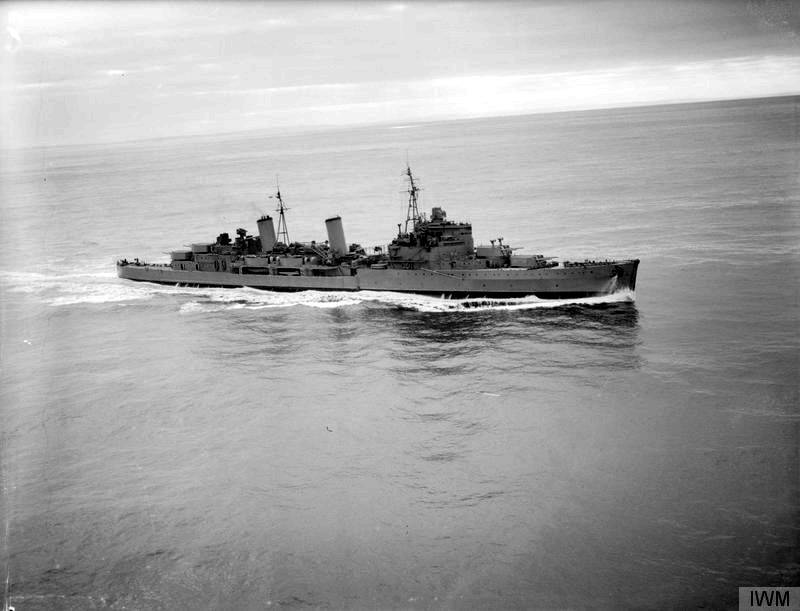
On April 30, Edinburgh was sighted by U-456. The cruiser headed the convoy in a wide anti-submarine zigzag. The German boat maneuvered for a long time, trying to take the correct position for the attack and eventually fired a three-torpedo salvo at the cruiser. Two of the three torpedoes hit, one in the aft and the other in the central. The stern was torn off along with the rudder and two propellers, the Edinburgh lost control and speed.
The crew was able to stop the flow of water, level the roll on board and localize damage. U-456 attempted a second attack, but was driven away by the destroyers. An attempt to take the cruiser in tow was unsuccessful, but the stubborn crew was able to start the turbines and, with the help of the two remaining propellers, give a course of about three knots.
The cruiser was steered by two destroyers with the help of wound tugs. There were about 250 miles to Murmansk that you could try to overcome. Over time, they were able to raise the speed to 8 knots.
On May 1, a convoy, from whose escort 5 warships departed, attacked German destroyers. There was a battle, as a result of which the Germans sank the Soviet steamer Tsiolkovsky and went to look for the damaged cruiser. And they found him on May 2.
Another battle took place. The practically immobilized cruiser, nevertheless, fought, and, moreover, did it with one second turret. Aft tower # 4 was jammed after the explosion of a torpedo, towers 1 and 3 simply did not see the enemy. Naturally, the fire control systems did not work. However, the level of training of the Edinburgh artillerymen allowed them not only to shoot exclusively at the rangefinder, but also to plant two shells in the destroyer Herman Sheman with the second salvo of tower No. 2.
The Sheman choked on the Edinburgh shells and stopped. Both engine rooms were disabled. Meanwhile, the Germans fired 8 torpedoes at the Edinburgh. The torpedo from the "Schumann" from the bow device did not hit the cruiser, but the torpedo from the Z-24 or Z-25 exploded on the left side of the ship.
The British destroyers Forester and Forsyth drove away the Germans, who removed the crew from the Schumann and finished it off. The British did the same, the crew of the Edinburgh switched to the convoy's minesweepers and the Forsyth finished off the cruiser with another torpedo.
Many researchers after the war "rolled" on the British sailors, saying that the cruiser could be saved. It's hard to judge, but I don't support these people. Three torpedoes are three torpedoes. Moreover, two British destroyers also had two German ones, who were not particularly in a hurry to leave the area. The Soviet destroyers left by the time the Germans arrived in Murmansk, they were running out of fuel. So - 2 x 2. In the conditions of the northern seas, with the enemy on the tail of the convoy, and even torpedo bombers flew in, and a German submarine ...
In general, it seems to me that the Edinburgh crew did everything they could in those conditions.
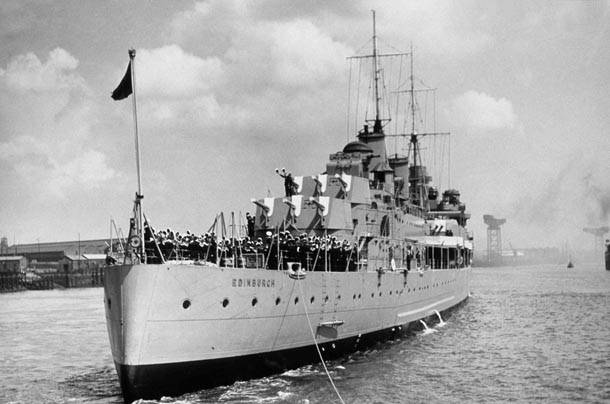
He did not let the cruiser sink, tried to reach Murmansk, fatally damaged a German destroyer ... I believe that the conscience of the sailors of the "Edinburgh" is clear. Moreover, the crew lost 57 people killed and about 30 wounded. And then they raised the gold anyway.
Belfast
The Irishman started the war on September 8, 1939, when she went to sea in search of German ships. But success came only on October 9, when the cruiser intercepted the German liner "Cap Norte" and the Norwegian dry cargo ship "Tai Ying" with cargo for Germany in the Atlantic. The ships were sent to British ports
On November 21, 1939, a German bottom magnetic mine exploded at the exit from the Firth of Forth near the Belfast. The cruiser lost speed and numerous compartments were flooded. The Belfast was towed to Rosyth, where it was found that the damage was significant. Deformation of the hull, displacement of the keel, destruction of frames.
On November 4, 1940, Belfast was expelled from the fleet and put in for repairs, which lasted until December 1942. On December 8, the cruiser returned to service and was sent north to guard the Arctic convoys.
During 1943, he took part in escorting convoys JW-53, JW-54A, JW-54B, participated in mine laying SN-123B and SN-123C, covered minelayers.
On August 15, 1943, Belfast was honored with a visit by King George VI.
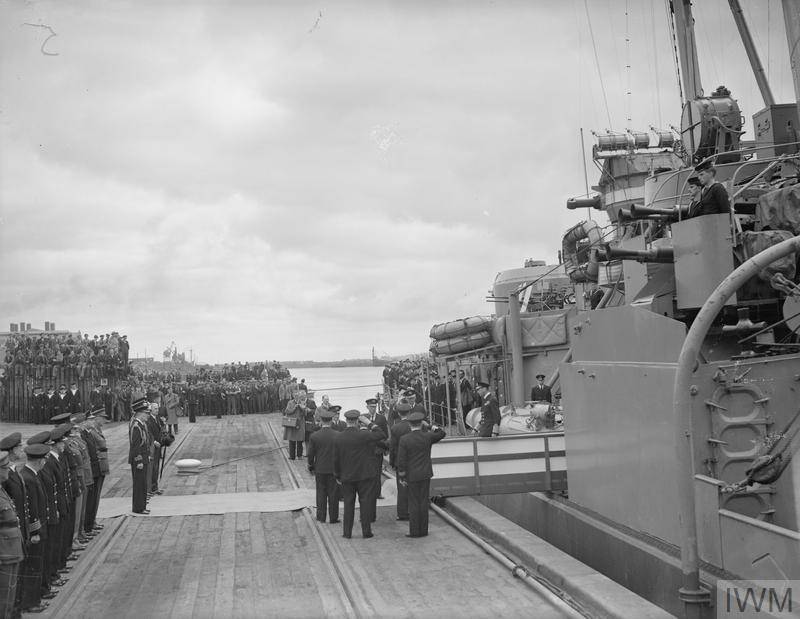
In December 1943, "Belfast" was part of the cover of the convoy JW-55B together with the battleship "Duke of York" and the cruisers "Norfolk", "Sheffield", "Jamaica".
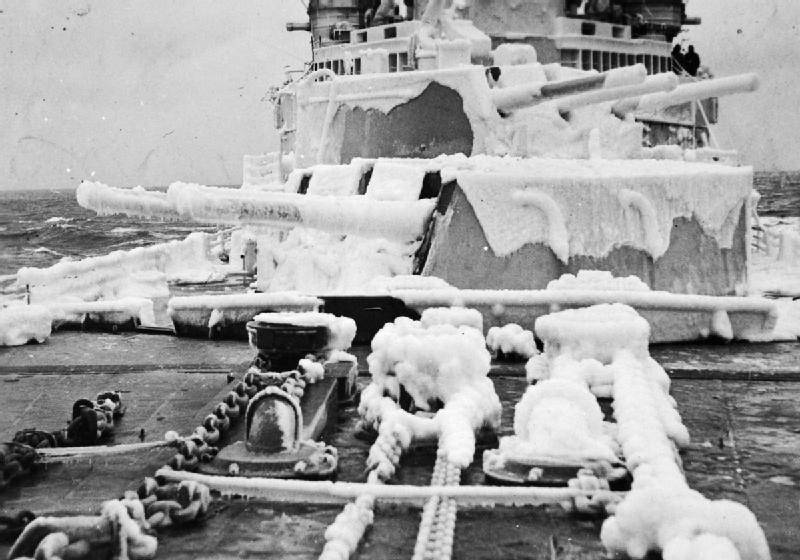
It was Belfast's radar that on December 26 discovered the Scharnhorst, which was heading for the convoy. At that time, there were only Belfast and Norfolk next to the convoy, which went towards the German ship and opened fire. The deal was so-so, but luck was on the side of the British sailors. The Sheffield's shell knocked out the German battleship's forward radar, and it retreated.
Everyone knows what happened next. The Scharnhorst stubbornly climbed on the convoy, the British cruisers stubbornly repulsed its attacks with shells and torpedoes. When the Duke of York approached, everything became sad for the Scharnhorst, and she sank, pierced by British shells.
During the battle, "Belfast" fired 38 volleys, using up 316 152-mm shells, 77 102-mm shells and three torpedoes. The cruiser was not damaged by German fire and achieved at least five hits on the German battleship.
On June 6, 1944, Belfast, as the flagship of Formation G, took part in Operation Neptune, covering, along with the cruisers Sirius, Diadem, Orion, Emerald and Ajax, the landing in Normandy, shelling German coastal batteries.
On July 8, 1944, Belfast, together with the battleship Rodney and the cruiser Emerald, supported the attack on the city of Caen.
The end of the won "Belfast" met in repair, after which the ship was transferred to the Pacific Ocean. Until the fall of 1947, the cruiser served as the British representative in the eastern waters, cruising between Japan, India and New Zealand.
In June 1950, the Korean War broke out. "Belfast" at that time was off the coast of Japan and was sent in accordance with the UN resolution to support the army of South Korea. The cruiser fired at the positions of the North Korean army, covered the landing at the mouth of the Taedong River, and repeatedly fired at Wonsan.
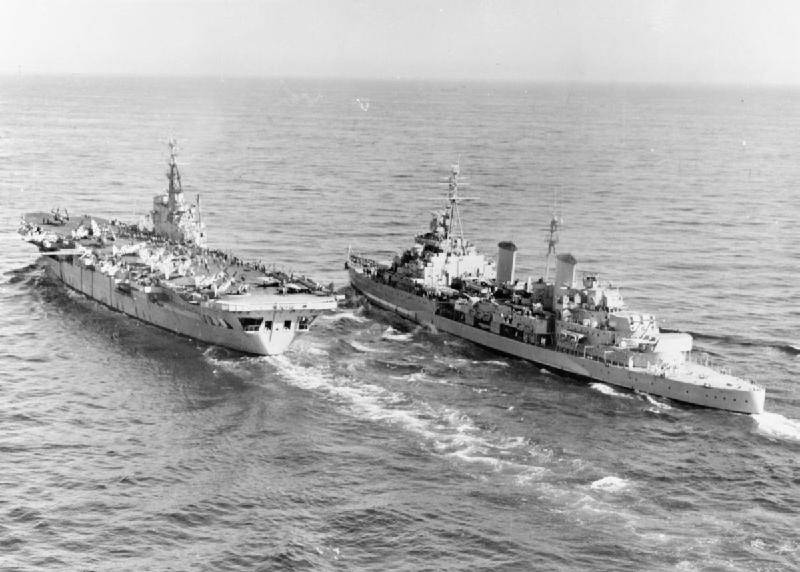
Belfast and Ocean in Korea 1952
On July 29, 1952, during the shelling of Volsari, the Belfast received a direct hit from a 76-mm shell from the North Korean coastal battery. The shell exploded in the forward cockpit, one person was killed and four more were injured.
During the Korean War, the Belfast used 7 rounds of 816 mm caliber.
From 1959 to 1963, the cruiser was used as a training ship, after which it was withdrawn from the fleet and made a museum.
On October 21, 1971, the cruiser Belfast was opened to visitors as a museum ship in London, and in this capacity it remains to this day.
What can be said as a result? What the British shipbuilders have done can be appreciated very, very highly. The result is truly magnificent ships, with good weapons, powerful air defense, radar equipment at the highest level and - which is not quite typical for British cruisers - excellent armor protection.
Yes, the cost of the ships was criticized, which was at the level of a heavy cruiser. But nevertheless, in the conditions of war, these turned out to be very, very decent ships. It can be pointed out that Belfast spent a lot of time in repairs, however, this may be the reason for such a long service life of the cruiser. And not as a floating barracks, but as a full-fledged ship.
In general, "Edinburgh" and "Belfast" turned out to be really outstanding representatives of the class of light cruisers, and not only in terms of performance characteristics, but also in terms of how these ships were used. Although, of course, it is worth making curtsies in the direction of the training of the crews, which was clearly at a very high altitude. But this is an even more valuable component than tools or turbines.
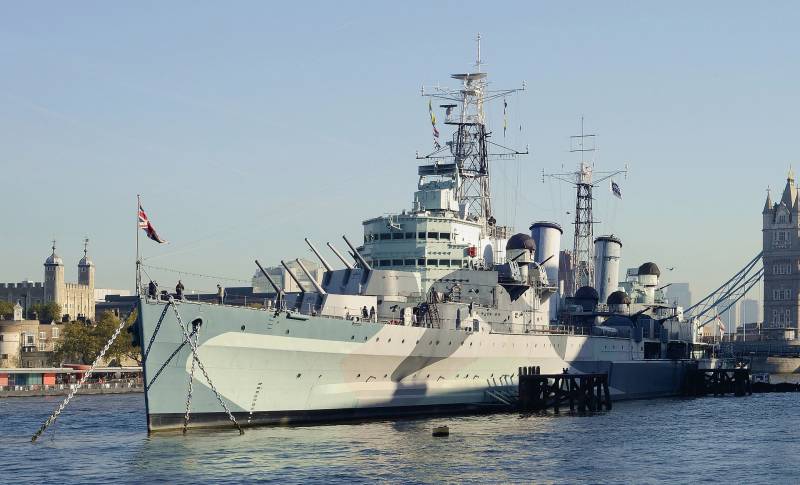
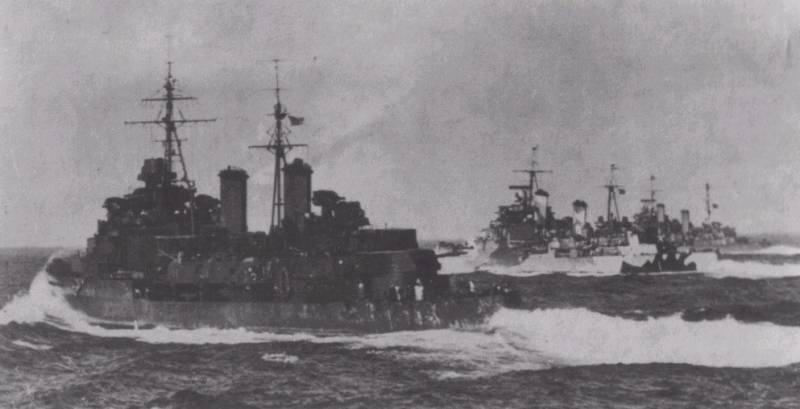
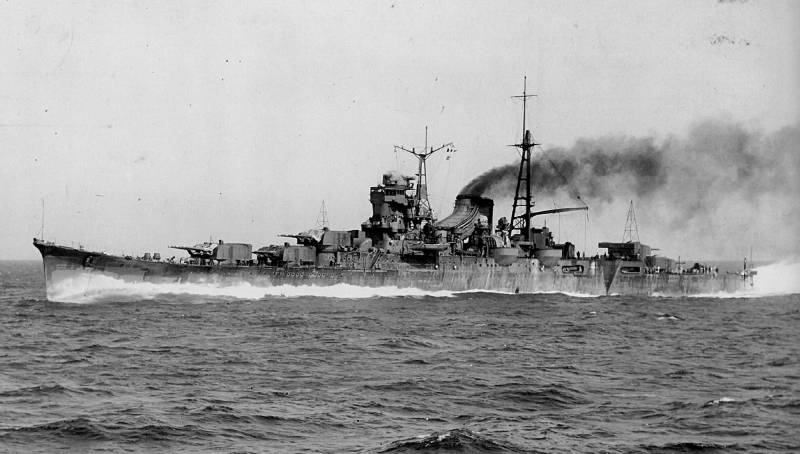
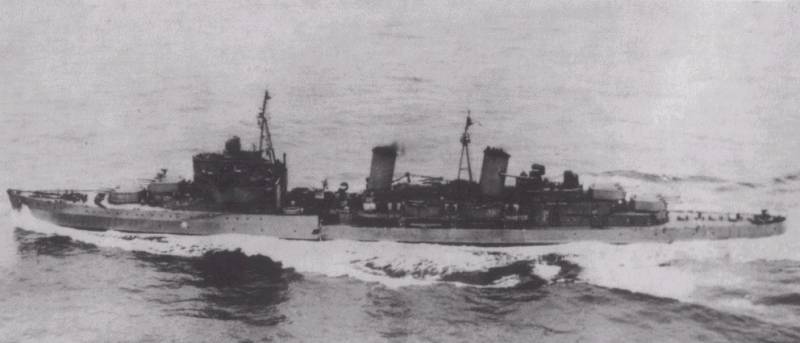
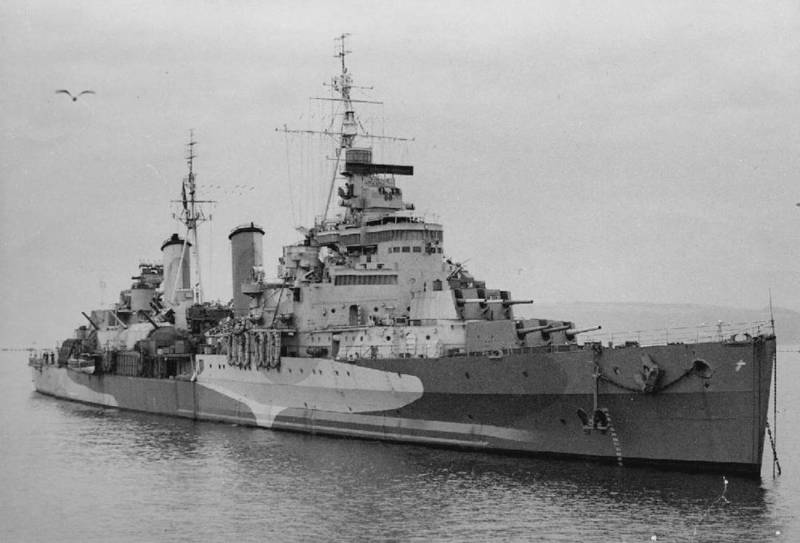
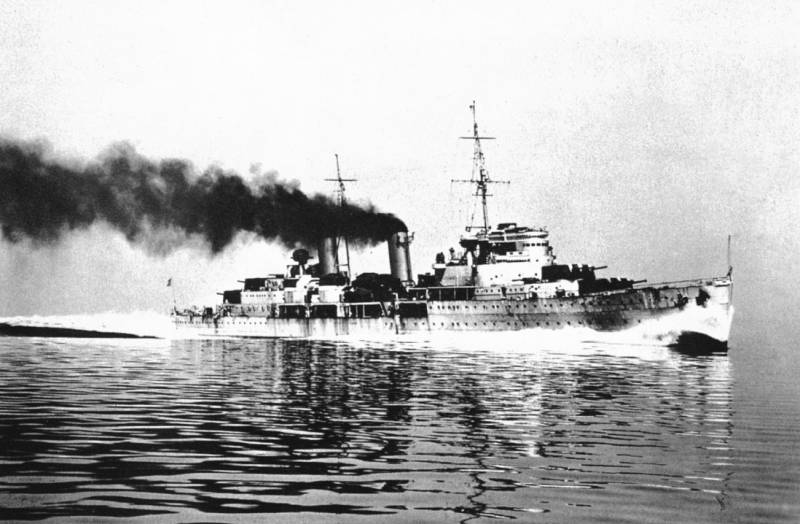
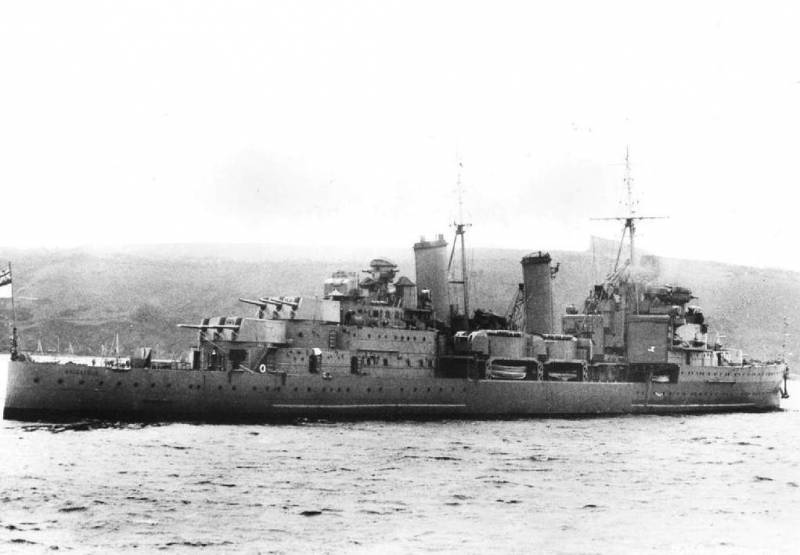
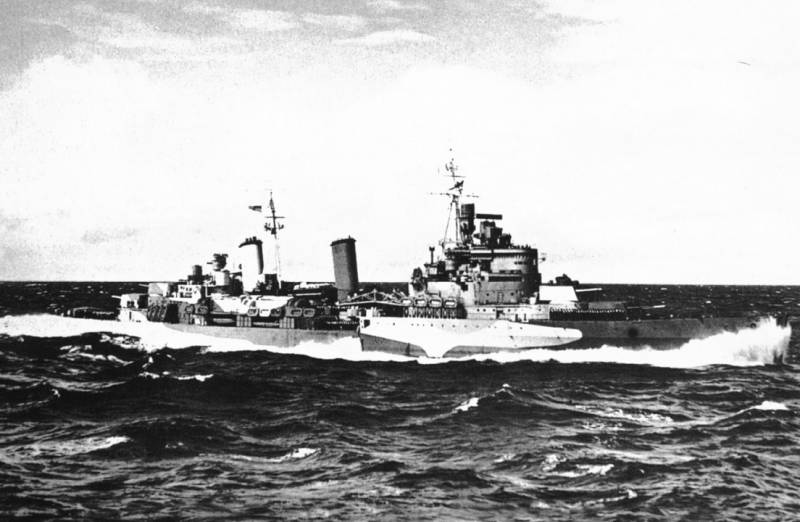
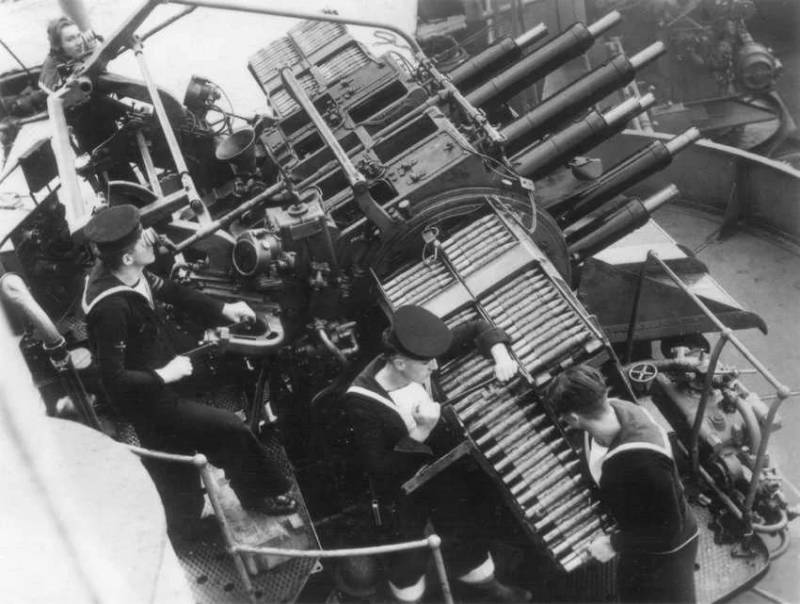
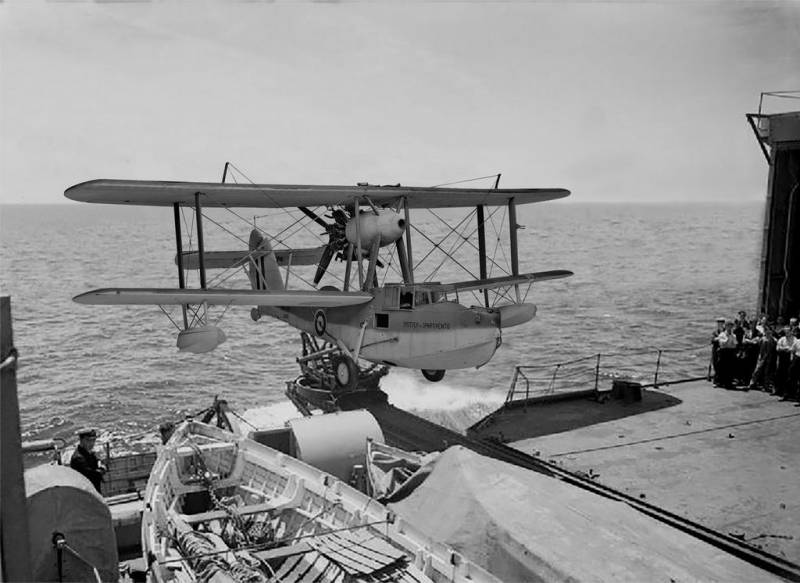
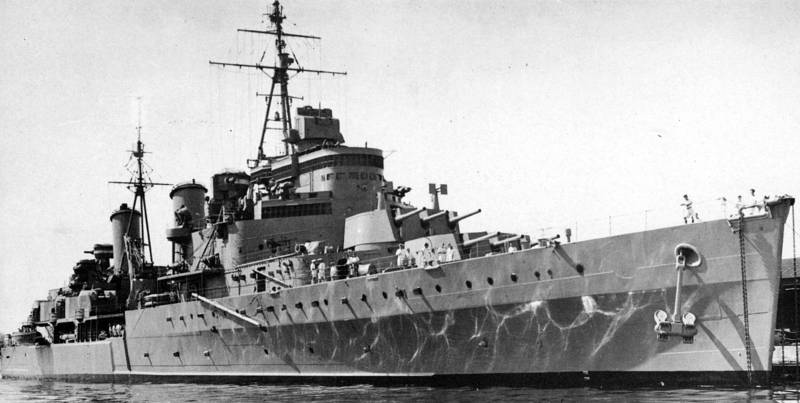
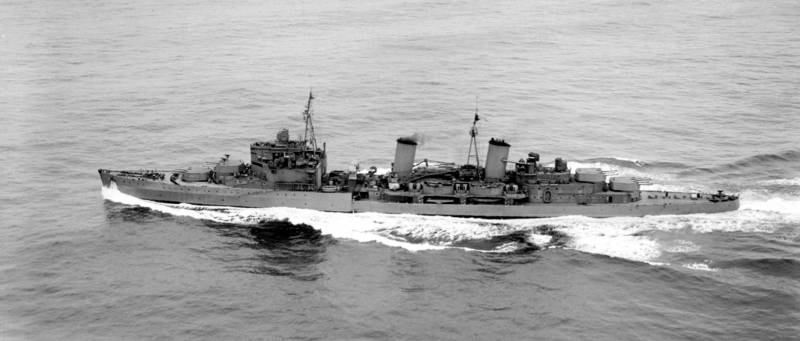
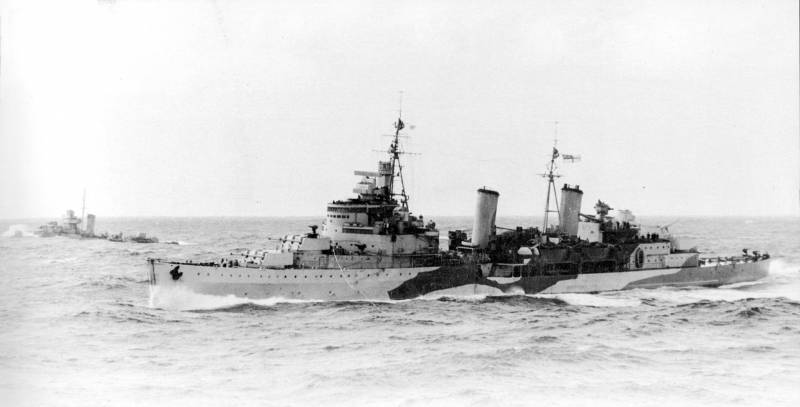
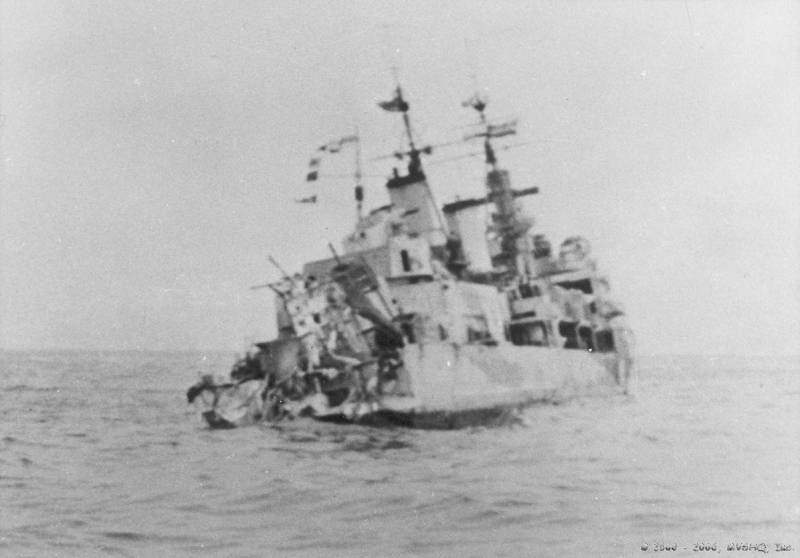
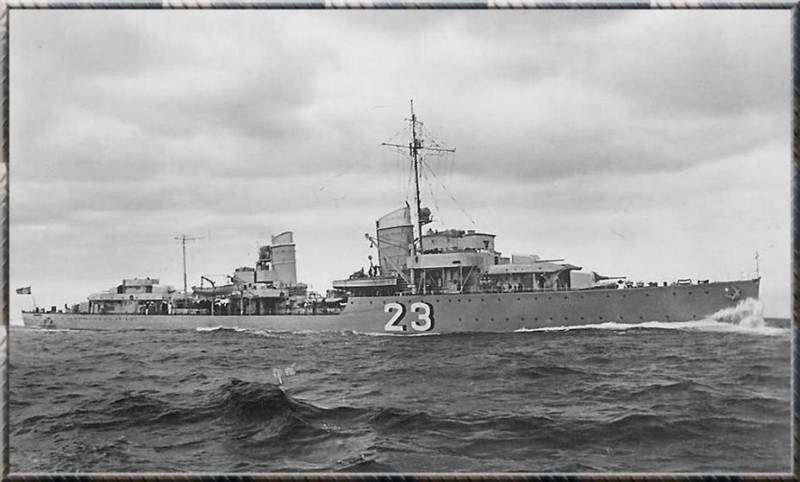
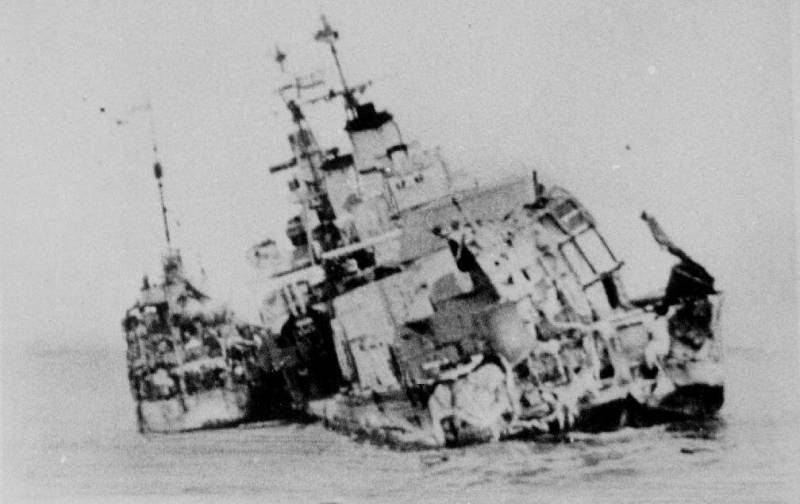
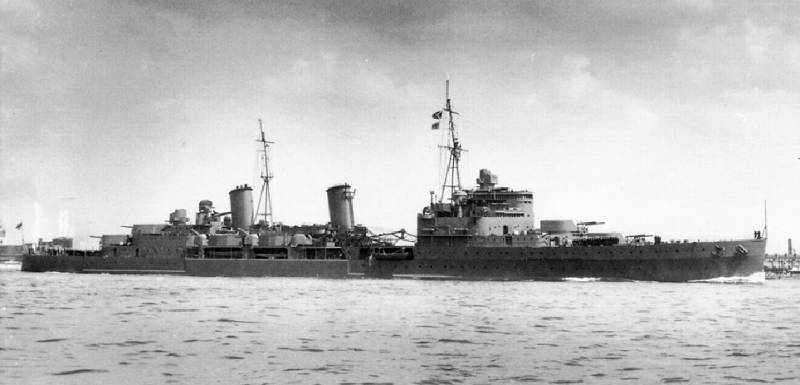
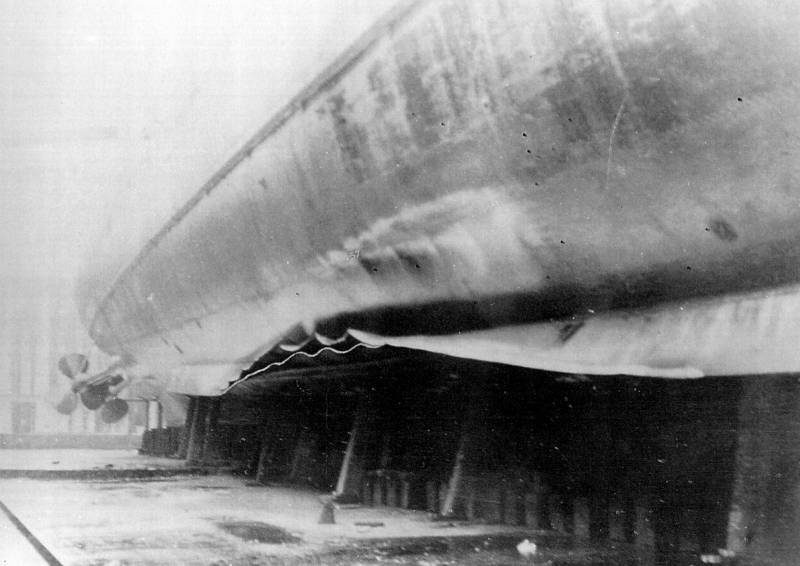
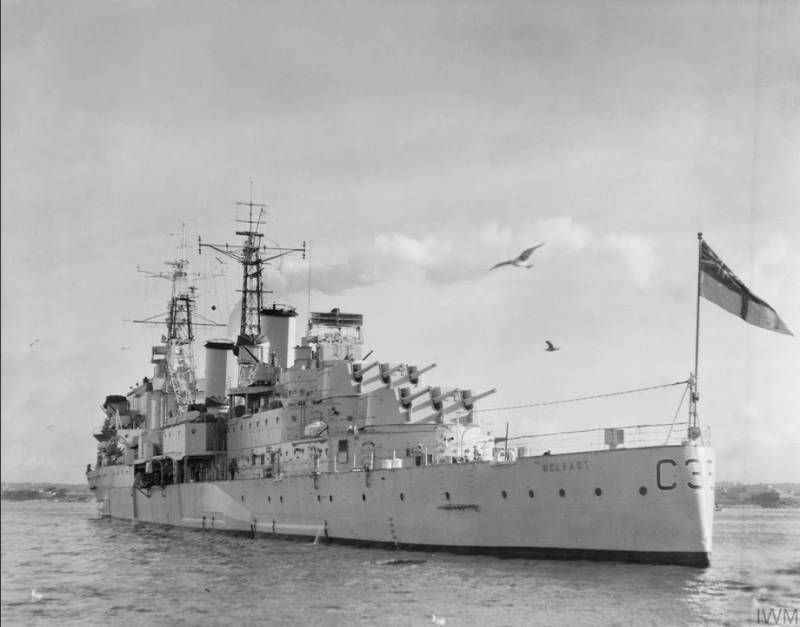
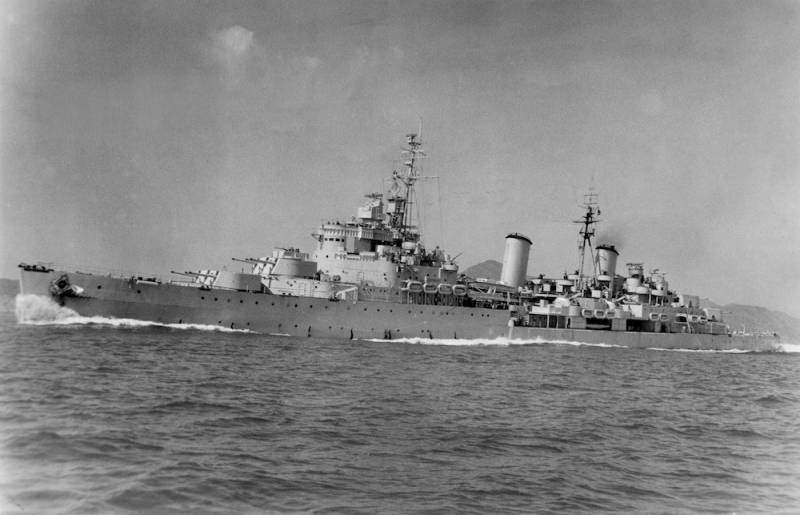
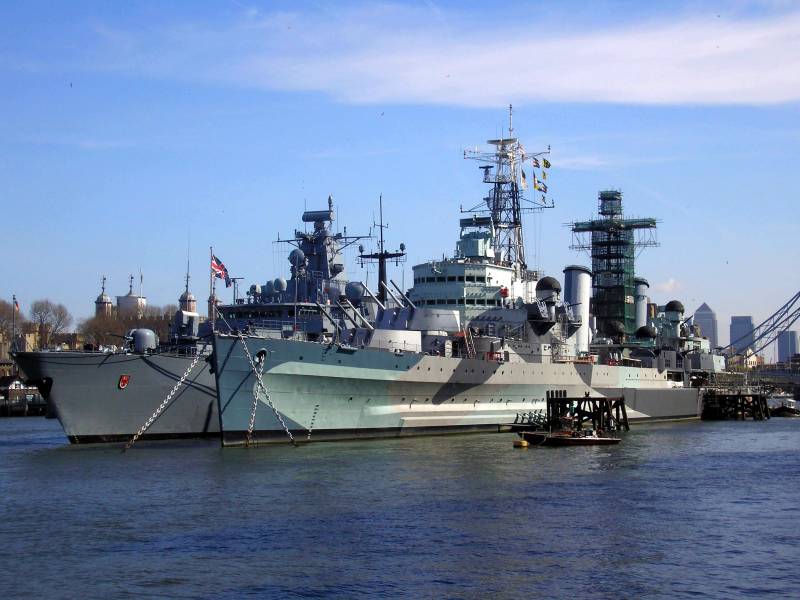
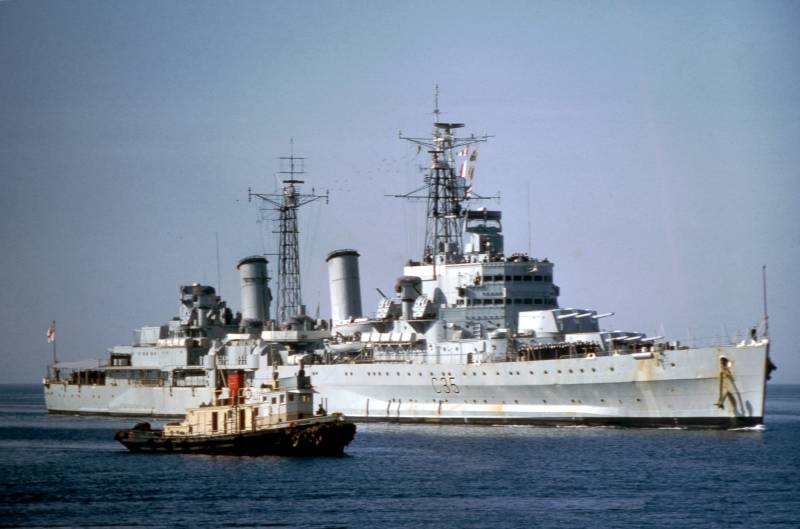
Information